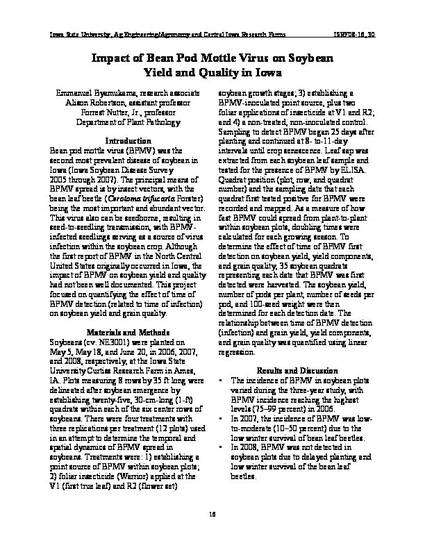
Unpublished Paper
Impact of Bean Pod Mottle Virus on Soybean Yield and Quality in Iowa
Iowa State Research Farm Progress Reports
Farm
Ag Engineering/Agronomy, Central Iowa and BioCentury Research Farms
Publication Date
1-1-2009
Disciplines
Abstract
Bean pod mottle virus (BPMV) was the second most prevalent disease of soybean in Iowa (Iowa Soybean Disease Survey 2005 through 2007). The principal means of BPMV spread is by insect vectors, with the bean leaf beetle (Cerotoma trifucarta Forster) being the most important and abundant vector. This virus also can be seedborne, resulting in seed-to-seedling transmission, with BPMVinfected seedlings serving as a source of virus infection within the soybean crop. Although the first report of BPMV in the North Central United States originally occurred in Iowa, the impact of BPMV on soybean yield and quality had not been well documented. This project focused on quantifying the effect of time of BPMV detection (related to time of infection) on soybean yield and grain quality.
Copyright Owner
Iowa State University
Copyright Date
2009
Language
en
File Format
application/pdf
Citation Information
Emmanuel Byamukama, Alison E. Robertson and Forrest W. Nutter. "Impact of Bean Pod Mottle Virus on Soybean Yield and Quality in Iowa" (2009) Available at: http://works.bepress.com/forrest_nutter/14/
